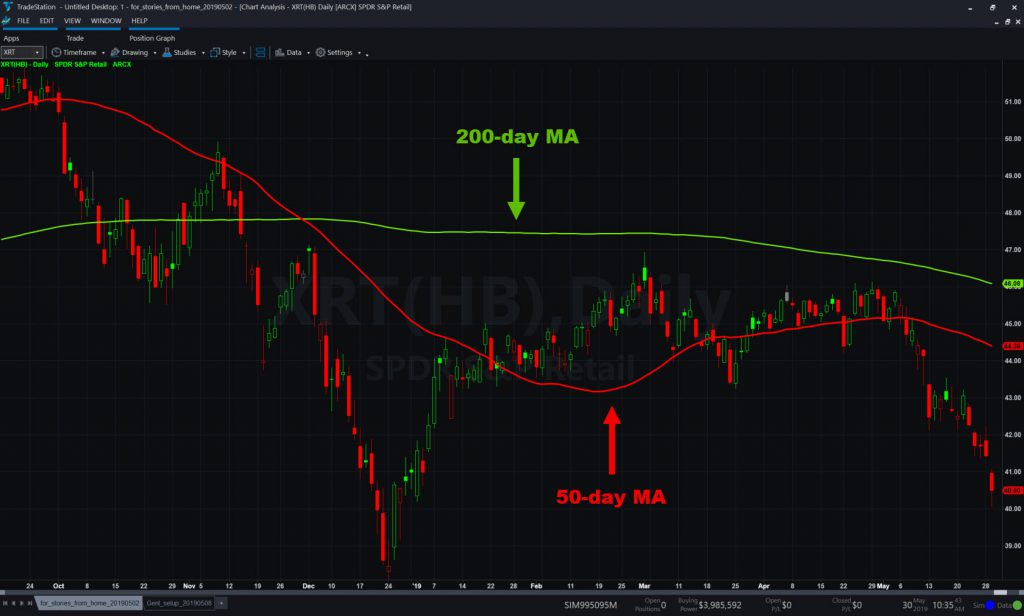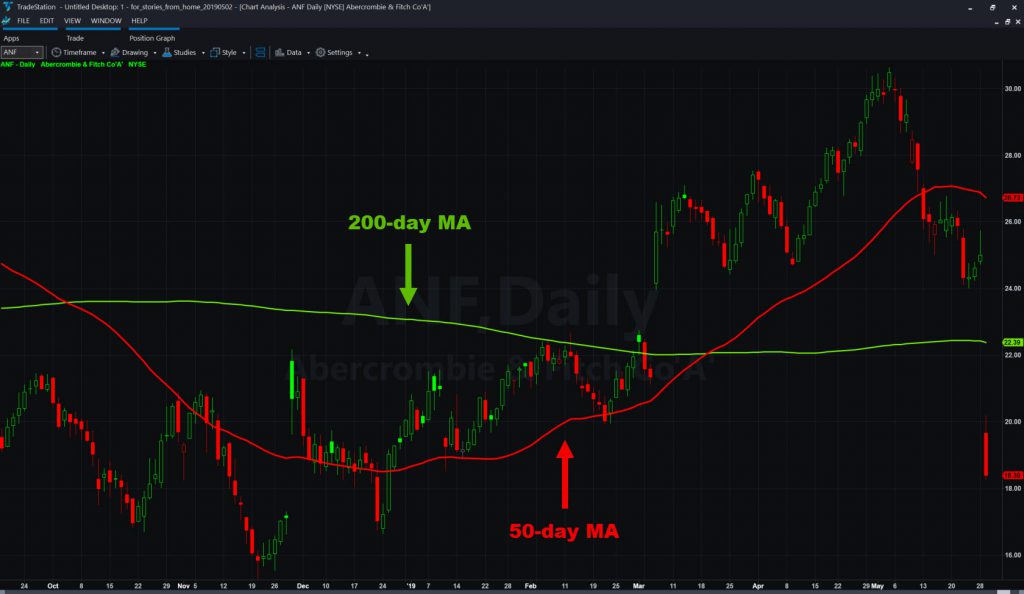A perfect storm of bearishness is sweeping retail stocks, making them one of the weakest links in a teetering market.
The SPDR Retail ETF (XRT) has lost 6 percent in the week ending yesterday, and is mired in the midst of its longest losing streak since early October. It also ranks near the bottom of short-term performance rankings, faring better than only energy and metals.
A new wave of store closures, slow foot traffic and the threat of tariffs squeezing profits have combined to hammer U.S. retailers. The trouble comes despite strong consumer-sentiment readings, prolonging a Darwinian battle for survival as e-commerce upends one of the world’s biggest industries.

The last week of earnings brought those realities into focus. Just look at XRT member stocks Abercrombie & Fitch (ANF) and Foot Locker (FL). Both lost more than one-quarter of their value after announcing results.
ANF warned of slowing demand at Hollister and announced plans to close three flagship stores. The surf-themed chain had provided a boost to a company previously dedicated to teen fashion. Its slowdown was a major setback for a stock that had almost doubled between Christmas and early-May.
FL also went from rallying to reeling. The athletic-footwear company had a failed breakout in March following a strong holiday quarter. Then on Friday it crashed after profit and same-store sales missed estimates. Management also warned of risks from President Trump’s trade war against China.
Traffic and Tariffs
That raises two of the most important issues weighing on the sector: foot traffic and tariffs.
Same-store sales, or business at locations open at least a year, reflect the number of consumers in shopping centers. That makes it one of the most basic measures of retailer health. Or in this case, sickness.
FL reported same-store sales growth of 4.6 percent. Analysts had expected 5.2 percent. ANF’s Hollister gain of 2 percent lagged the 3.3 percent forecast. Nordstrom (JWN) and Kohl’s (KSS) told similar tales.
Put all those numbers together. Add in the Commerce Department’s dismal retail sales report for April, and a bigger story emerges: Fewer people are going shopping.

Even if they were hitting the malls, there would be fewer aisles to browse. The number crunchers at Coresight Research have counted at least 7,150 store closures since January. (Dressbarn is the main example lately.) The current pace is up sharply from last year, and puts us on pace to break 2017’s record of 8,139 closures.
We all know this is part of a longer-term trend, with e-commerce firms like Amazon.com devouring brick-and-mortar merchants. But now FL and KSS add the specter of higher costs from President Trump’s tariffs. While this risk is much less clearly known, it could also threaten margins at the same time business volumes are getting hit. A double-whammy.
XRT’s Holdings
The recent selling has been so intense that only 5 of the 93 companies in XRT gained in the last five sessions. Target (TGT) is the best known.
XRT’s assets are widely dispersed across those names, with no individual stock accounting for more than 2 percent. That could make its top holdings a little surprising, but here are the five largest:
- Lithia Motors (LAD): The country’s third-biggest chain of auto dealerships. Its locations operate under home-town identities like “Don’s Ford,” which is why you might not know Lithia by name. LAD has grown by acquisitions.
- CarMax (KMX): Did you know America’s biggest used-car chain grew out of the now-defunct Circuit City electronics store?
- Ollie Bargain Outlet (OLLI): The discounter has fared better than most retailers, surging 43 percent so far in 2019. It’s holding above 2018’s highs, with the next earnings report due on Thursday, June 6.
- Carvana (CVNA): The online car seller more than doubled between February and early-May, only to pull back on news of a secondary stock offering. Year-over-year revenue doubled last quarter.
- Autonation (AN): The biggest U.S. car dealership has struggled with weak sales volumes.
This post is part of our regular “ETF of the week” series. It focuses on exchange-traded funds with interesting news or price changes.




























